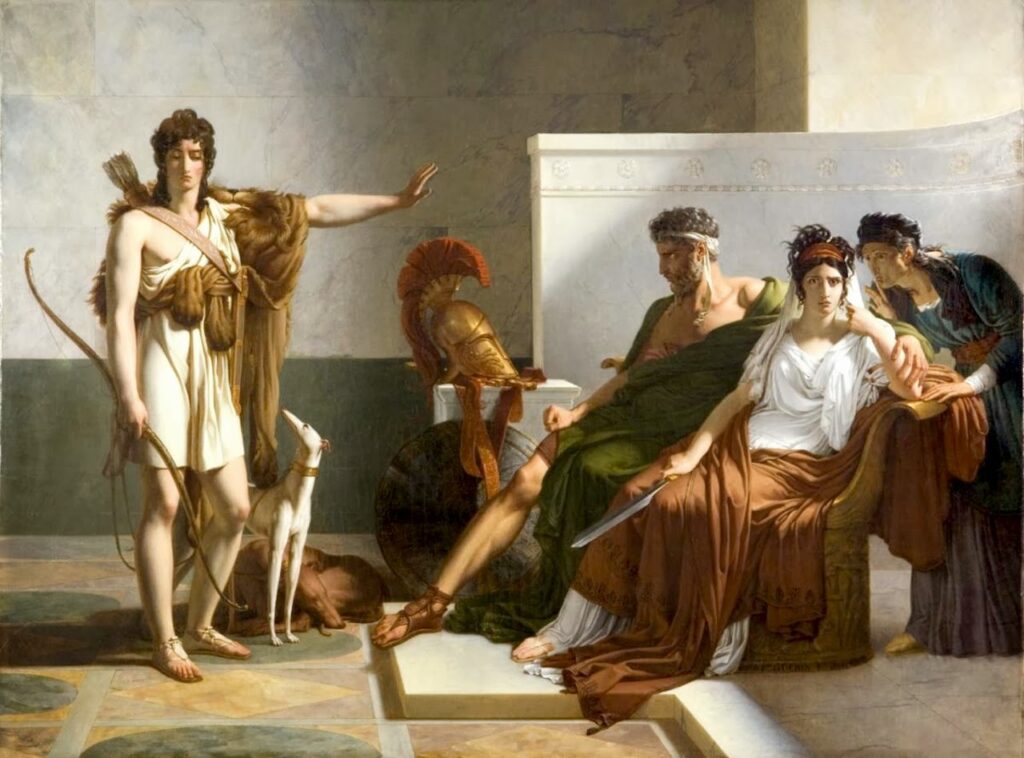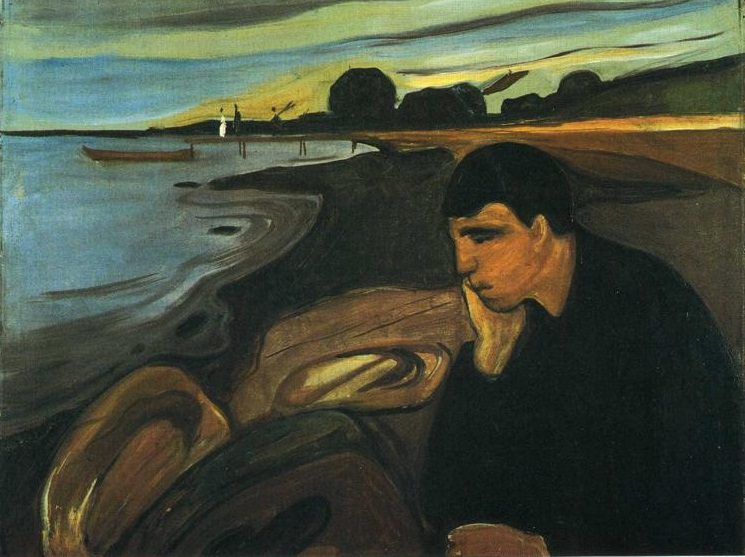Home » Topics / Subgenres » Personal Struggle
Category Archives: Personal Struggle
The Hunchback of Notre-Dame
(Notre-Dame de Paris)
Victor Hugo
1831
(Love for a young gypsy woman allows an ugly man to rise above the world’s hatred of him, and to show his inner beauty).

Beauty and beast stories are thousands of years old. Here is how they generally go: a beautiful maiden somehow must associate with a character of less-than-alluring appearance, such as an animal, a god in disguise, or a magically uglified human. The girl eventually sees beyond the grotesque exterior to the real person inside, and falls in love. Then very often the whole moral is promptly compromised by the male character’s transformation into the handsome prince. Ah—it’s really about outward appearance (and wealth) after all! I write this with a smirk, as in fact those stories are not claiming that outward appearance should have no importance, but just that love can be demonstrated to be rooted in deeper things if we remove good looks as an experiment. (By the way, we’re generally talking here about removing the man’s good looks. Removing the woman’s good looks is far rarer in literature, as any student of human behavior could have predicted.)
Victor Hugo, perhaps the wisest of the great French novelists, wrote the perfect beauty and beast story—indeed, could do so only because he was wise. He understood beauty and was true to it in all its manifestations; and he understood ugliness and was fearless and trenchant in portraying its effects and implications. The novel is fundamentally about beauty: of Notre Dame cathedral, of Quasimodo its deaf mutant bell-ringer, of Esmeralda the gypsy girl. The beauty is very different in the three examples, except in fragility, which they share—these three beautiful things, a building, a beast, and a belle. And their fragility is due to ugliness, which likewise takes diverse forms.
Hippolytus
(Ἱππολυτος)
Euripides
429 BC
(Disaster ensues when Phaedra falls for her stepson!)

The gods will have their play, and we piteous humans must suffer in double jeopardy. First, vice will eventually bring destruction, and yet we are by nature weak and prone to vice. Second, everyone is subject to fate, which is not kinder to good people than to bad. So we are doomed—we cannot be virtuous as we want to be, and so we are in trouble; and yet even if we could be virtuous we would get smacked anyway by the vicissitudes of fate! Hence Euripides’ fist-waving at the gods… yet he manages to preserve some reverence. Artemis tells us that the pious are still much more highly regarded by the gods than the impious. When the impious person suffers, the gods nod “take that!”, whereas the faithful incur their favor, which can bring some benefit. So, given our sad lot in life, it is better to be suffering and good than suffering and evil. Or that is Euripides’ line anyway. In this play we see how this web of cosmic influences plays out in the life of a chaste and honorable man destined for greatness by rights, when (through no fault of his own) his stepmother takes an improper liking to him.
The History of Mr. Polly
H. G. Wells
1910
(A man of precisely 37.5 years of age can’t seem to find success or happiness in life… perhaps he has to do something drastic.)

“HOLE!” said Mr. Polly, and then for a change, and with greatly increased emphasis: “ ‘Ole!” He paused, and then broke out with one of his private and peculiar idioms. “Oh! Beastly Silly Wheeze of a Hole!”
Thus begins an entertaining fictional biography of a man who really needs a whack upside the head– one of several greats in that odd subgenre– Tom Jones, Babbitt, and Updike’s Rabbit series, for examples. (H. G. Wells writing fictional biography? In a contemporary setting? This might surprise those of us, such as myself, who had equated him with science fiction and socialist nonfiction. But anyway…) Our protagonist is an endearing and vivid, if frustrating character, who hides his depression with funny one-liners and his poor education with deliberate mispronunciations. And, as with many colorful characters in real life, beneath the wit cowers a man who hasn’t a clue where he’s going. His path through life is that of a flat boat with untethered sails– he might as easily plummet to his death over a waterfall as drift into a homely port. Or, to use Alfred Polly’s own metaphor, he’s in a hole. And no amount of quaint phrasing and amusing epithet, no ability to make women giggle, and no success as a shopkeeper is going to hoist him out of it.
Arnold’s early poems
Matthew Arnold
1840-1849
(A man of intellect and of spiritual sensitivity contemplates the purpose of life and its struggles.)

“Unwelcome shroud of the forgotten dead,/ Oblivion’s dreary fountain, where art thou”. What a dark way to begin one’s poetical efforts, at 18 years of age! And we need read no further to suspect (correctly) that in Matthew Arnold we are in for something very different from the Romantics, and quite different also from his Victorian contemporaries Browning and Tennyson. The essence of the distinction is in his preoccupation with the meaning of life, and by extension death and the loss of faith. This spiritual decline that disturbed him so much, often called the maladie du siècle or the “sickness of the century”, had been treated more seriously on the continent, while in England Wordsworth, Keats, and Shelley were grasping at Nature or the humanism of the Greeks for their spiritual anchor. Arnold was a more melancholic, more skeptical poet, and doubted that the sickness could ever be cured, although he certainly loved the ancients (many of his early poems have classical subjects), and he also did look to nature for inspiration. Even as a teen he presaged the Existentialists, and indeed much of the spirit of the twentieth century, in trying to devise a way to preserve our spirituality and sense of wonder while being brutally honest about our mortality and the fleeting nature of all human endeavor. Matthew Arnold was a great poet not mainly because he was imaginative, morally sensitive, and wonderstruck, nor on the other hand because he was freethinking, scholarly, and skeptical; he was great because he was somehow both of these sorts of people at once. If his poetry could be said to have a single goal, it was to merge these two halves of his consciousness, the spiritual and the intellectual.



Madame Bovary
October 21, 2020 / Leave a comment
Gustave Flaubert
1857
(An unhappily married woman pursues a lifelong quest for the fulfillment of her romantic desires, by any means necessary.)
When a novelist is said to rebel against romanticism, anyone with an imaginative, adventurous, passionate, chivalrous, or spiritual streak may be forgiven for wanting to give it a pass. Such a writer sounds staid and dry, shaking a finger at anything beautiful or enjoyable; or worse, morose—seeing the gray in everything and anxious to spend hundreds of pages sharing it with you. So who is this Flaubert, then? Flaubert with the beautiful descriptions, the engaging plot, the dramatic scenes, the fevered dialogue? With this great author’s help we should make a crucial distinction. Flaubert’s aim is leveled not at imagination or adventure or passion or chivalry or spirituality per se, but rather at the perverse attention romantics often pay to the emotional effects that these things have on us. Just as it is not money itself, despite frequent misquotes, but the love of money, that is said to be the root of all sorts of evil, likewise it is the worship of imagination’s fancy-tickling effects, rather than imagination itself, that novels like Madame Bovary seek to dethrone. Emma Bovary ruins her life because, in Flaubert’s words, she seeks emotions, not landscapes. She has a sentimental rather than artistic temperament, meaning she wants to gobble up beauty rather than appreciate it. The romanticism Flaubert criticizes is selfish, subjective, emotivist. It is that attitude which confuses sensual appeals of luxury with the joys of the heart. It is what says “Give me that” rather than “That is wonderful”. Even a true romantic, a healthy romantic– perhaps especially such a person– can doff the hat to Flaubert for this.
(more…)